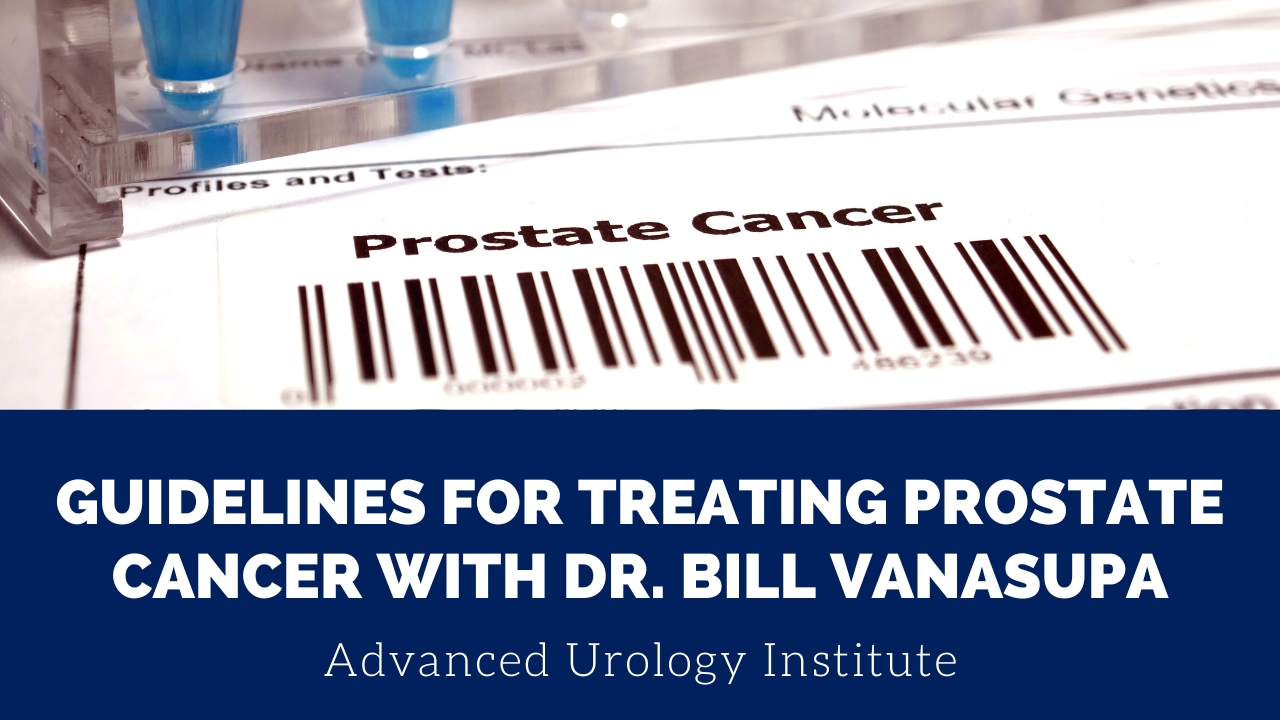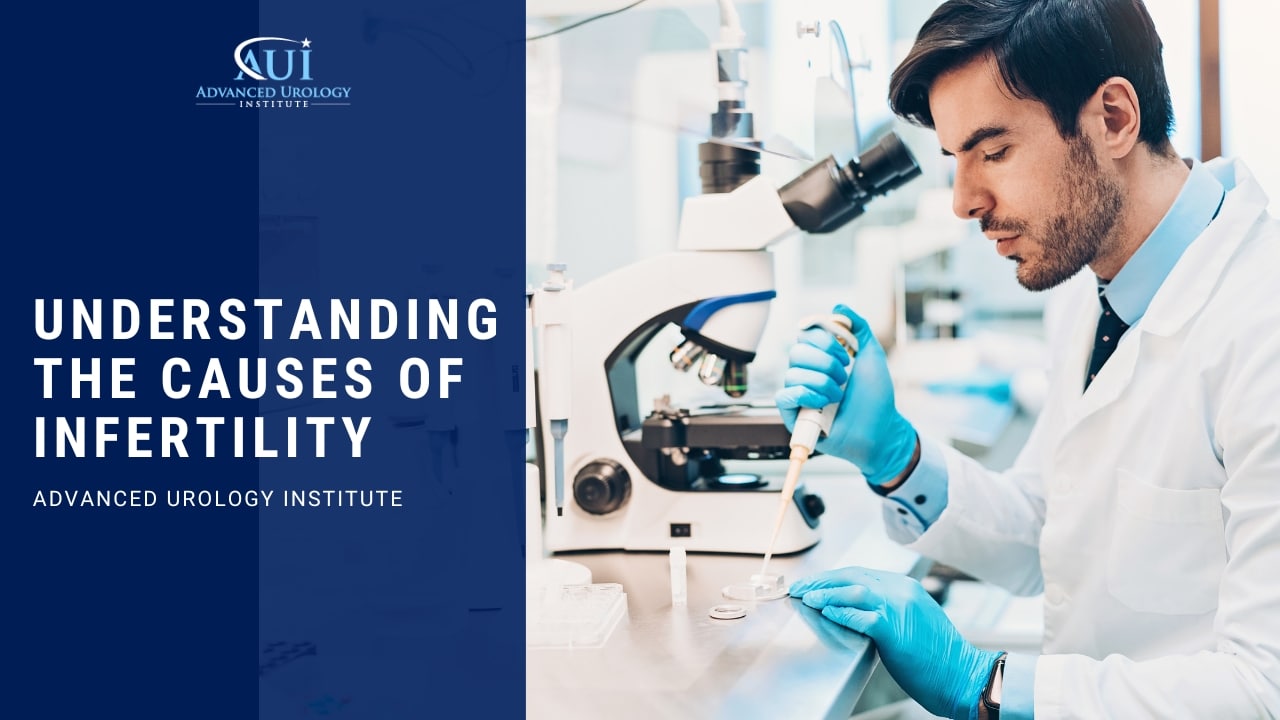Why is it important to raise Bladder Cancer awareness in our communities? Know more about the risk factors and symptoms associated with the condition.
Continue readingHow can you show support during Testicular Cancer Awareness Month?
Key Takeaways:
- Testicular cancer is a treatable disease if detected early, and is most common among men aged 15-35.
- There are multiple ways to show support for Testicular Cancer Awareness Month, such as sharing information on social media, wearing the color purple/violet or a Testicular Cancer awareness ribbon, and participating in local fundraising events.
- Early detection is key, and having a support system during and after treatment is important for a positive outcome.
I. Introduction
 Testicular Cancer Awareness Month is a month-long campaign that aims to raise awareness about testicular cancer and promote early detection and treatment. It takes place every April, and its significance cannot be overstated. Testicular cancer is one of the most common types of cancer among men aged 15 to 35, and it is highly treatable if detected early. In this article, we will explore the importance of supporting the cause and provide practical ways for readers to get involved.
Testicular Cancer Awareness Month is a month-long campaign that aims to raise awareness about testicular cancer and promote early detection and treatment. It takes place every April, and its significance cannot be overstated. Testicular cancer is one of the most common types of cancer among men aged 15 to 35, and it is highly treatable if detected early. In this article, we will explore the importance of supporting the cause and provide practical ways for readers to get involved.
II. Understanding Testicular Cancer
Testicular cancer is a type of cancer that starts in the testicles, the male reproductive glands located inside the scrotum. It can develop in one or both testicles and is more common in younger men. The exact cause of testicular cancer is unknown, but some risk factors include a family history of the disease, undescended testicles, and abnormal testicular development.
Symptoms of testicular cancer may include a lump or swelling in the testicle, a feeling of heaviness in the scrotum, pain or discomfort in the testicle or scrotum, and a dull ache in the lower abdomen or groin. It is important to note that not all lumps or swelling in the testicle are cancerous, but it is essential to get them checked by a doctor to rule out any serious conditions.
Early detection and treatment of testicular cancer are crucial for a positive outcome. Treatment options may include surgery, chemotherapy, or radiation therapy. The earlier the cancer is detected, the more likely it is to be treated successfully.
III. Ways to Show Support During Testicular Cancer Awareness Month
There are many practical ways for readers to get involved and show support during Testicular Cancer Awareness Month. Here are some suggestions:
- Share information about Testicular Cancer on social media.
Social media is an excellent platform for raising awareness and sharing information about testicular cancer. Readers can share facts and statistics about the disease, post links to resources, and use hashtags like #TesticularCancerAwarenessMonth to join the conversation.
- Wear the color purple/violet or a Testicular Cancer awareness ribbon.
Wearing purple/violet or a Testicular Cancer awareness ribbon is a simple but powerful way to show support. Readers can wear purple/violet clothing or accessories, tie a purple/violet ribbon to their car or bike, or even dye their hair purple/violet.
- Donate to Testicular Cancer research and advocacy groups.
There are many organizations dedicated to funding research and advocating for men with testicular cancer. Readers can donate to these groups to help support their mission and further the fight against the disease.
- Participate in local fundraising events.
Many communities host fundraising events during Testicular Cancer Awareness Month, such as walks or runs. Readers can participate in these events to show their support and help raise funds for research and advocacy.
IV. Interview with a Testicular Cancer Survivor or Expert
To provide readers with insights and advice from someone who has been directly affected by testicular cancer or an expert in the field, we reached out to Dr. Mark W. Dersch, a urologist at Advanced Urology Institute, and a survivor of testicular cancer himself. Dr. Mark W. Dersch shared his experience with us and offered some advice for others who may be going through a similar situation.
Dr. Mark W. Dersch was diagnosed with testicular cancer in his mid-20s and underwent surgery to remove the affected testicle. He stresses the importance of early detection and encourages men to perform regular self-exams and seek medical attention if they notice any abnormalities in their testicles.
Dr. Mark W. Dersch also emphasizes the importance of having a support system during and after treatment. He recommends seeking out support groups or connecting with other survivors to share experiences and offer support.
V. Conclusion
Testicular Cancer Awareness Month is an essential time to raise awareness about testicular cancer and promote early detection and treatment. By understanding the risks, symptoms, and treatment options, men can take charge of their health and seek medical attention if necessary.
There are many practical ways for readers to get involved and show support during Testicular Cancer Awareness Month, from sharing information on social media to participating in local fundraising events. Donating to research and advocacy groups can also help fund advancements in treatment and prevention.
Finally, the personal experience of a survivor or expert like Dr. Mark W. Dersch reminds us of the importance of early detection and having a support system during and after treatment. Testicular cancer is a treatable disease, but it requires vigilance and awareness from men and their loved ones.
As we approach Testicular Cancer Awareness Month, let us all commit to raising awareness, supporting research and advocacy efforts, and empowering men to take charge of their health. As Dr. Mark W. Dersch reminds us, “Early detection is key. Don’t wait, take action, and get checked.”
REFERENCES:
- “April is Testicular Cancer Awareness Month | The AACR.” https://www.aacr.org/patients-caregivers/awareness-months/testicular-cancer-awareness-month/.
- “Testicular Cancer: Symptoms and Signs.” https://www.cancer.net/cancer-types/testicular-cancer/symptoms-and-signs.
- “Signs and Symptoms of Testicular Cancer.” 17 May. 2018, https://www.cancer.org/cancer/testicular-cancer/detection-diagnosis-staging/signs-and-symptoms.html.
- “Testicular Cancer Awareness Month.” https://www.testicularcancerawarenessfoundation.org/tc-awareness-month
Guidelines for Treating Prostate Cancer with Dr. Bill Vanasupa
Dr. Billy Vanasupa talks about the importance of informed decision-making when it comes to prostate cancer treatment. While medical professionals can offer guidance and recommendations based on the latest research and guidelines, ultimately, the patient should have a say in their treatment plan.
Continue readingDebunking the Top 5 Vasectomy Myths
It is no surprise then that so many questions and myths about vasectomies exist. This article debunks five of the most common vasectomy myths with evidence from clinical studies. With accurate information and knowledge that vasectomies are a safe, effective and long-term option, men can make an informed decision.
Continue readingUnderstanding The Causes of Infertility
Infertility can be a frustrating and emotionally challenging experience for couples trying to conceive. The causes of infertility can be attributed to health problems, environmental factors, or lifestyle choices.
Continue readingWhat happens to sperm after a vasectomy?
 Are you a man intending to undergo a vasectomy but aren’t sure about its efficacy?
Are you a man intending to undergo a vasectomy but aren’t sure about its efficacy?
Are you worried that the procedure will affect your sexual desire, performance or pleasure?
Or are you anxious that the sperm prevented from reaching your ejaculate may cause adverse effects in your body?
If so, here is what you should know about the fate of your sperm after a vasectomy.
- Your body continues to produce sperm after a vasectomy
A vasectomy doesn’t stop your body from producing sperm. It only stops the sperm produced from being part of the fluid you ejaculate. The procedure does not in any way interfere with your testicles, which is your body’s sperm factory.
Inside the testicles are tiny, coiled tubes known as the seminiferous tubules. The tubules produce sperm throughout your lifetime. They contain cells called sperm nurse cells that control the sperm stem cells from where new sperm cells emerge. The sperm nurse cells are surrounded and stimulated by testosterone-producing cells.
Vasectomy does not affect any of these cells found in the seminiferous tubules. So it does not hamper or limit sperm production. And your body continues to produce sperm just as it did before the procedure.
- Your body naturally dissolves and reabsorbs sperm after a vasectomy
Before a vasectomy, the sperm produced in your testicles are moved and stored in the tightly coiled tube, called the epididymis. The sperm cells stored in the epididymis are then transferred to the vas deferens and out of the body via the urethra during ejaculation.
During a vasectomy, the vas deferens is cut and blocked, closing the pathway along which sperm move out of the body. So the sperm produced in the testicles and stored in the epididymis can no longer move out of the epididymis through the vas deferens to be part of the semen you ejaculate.
The sperm remains stored and unused in the epididymis for a period of time. After that, the body’s natural destruction process occurs, where the sperm is dissolved and reabsorbed into the body through the membrane lining the epididymis.
- Your body’s re-absorption of unused sperm is harmless
The process of re-absorbing sperm in your body after a vasectomy is similar to what happens to the sperm the body produces during periods when you are sexually inactive. Of course, when you’re sexually active, you ejaculate regularly, use most of the sperm produced, and compel the body to make more sperm.
But when you are sexually inactive for an extended period of time, your body produces less sperm and stores and reabsorbs unused sperm. It is this same process of naturally re-absorbing unused sperm that occurs after a vasectomy. The natural, harmless process swings into action to prevent buildup of unused sperm if you don’t ejaculate for a long period.
The process occurs in two steps. First, the body uses special cleanup cells called macrophages to break down old or unused sperm by dissolving them. Secondly, the remnants of broken-down sperm cells are absorbed into the membrane lining the epididymis.
- Your sexual desire, function, and pleasure does not change after a vasectomy
Because the vasectomy procedure does not affect your testicles, it does not interfere with your testosterone levels. So your sexual desire is not affected.
Also, a vasectomy does not interfere with your ability to have and maintain an erection. So if you have no erectile dysfunction before the procedure, you’ll have normal erections and performance after it. In fact, your performance may be improved by the boost you get from not worrying about the risks of pregnancy.
Likewise, since the ejaculate is usually made up of 2-5 percent sperm, the volume of your ejaculate does not change after a vasectomy. You’ll be able to have sex, feel the same levels of pleasure, and ejaculate normally. The only difference will be the absence of sperm in the ejaculate.
- You need an alternative form of contraception until your semen is sperm-free
With a long-term success rate of 99-percent, a vasectomy is one of the best forms of birth control; only second to abstinence. But you’ll still need to be careful a few weeks after the procedure as you can still make your partner pregnant.
There will be some sperm in the upper portion of the vas deferens after a vasectomy. These sperm cells will find their way in semen and may cause a pregnancy if you have sex after the procedure. That is why you need to use an alternative form of birth control until the absence of sperm in your semen has been confirmed.
The sperm count in semen decreases gradually after a vasectomy. But it takes approximately 8 weeks or 20 ejaculations following a vasectomy for the semen to be sperm-free. Your doctor will recommend tests on your semen during this period to check for the presence of sperm.
Safe, effective vasectomy
Vasectomy is a safe, effective, and permanent birth control method. It neither interferes with your sex life nor stops your body from producing sperm. It only stops sperm from being part of the ejaculate, but with not much difference in the color and quantity of semen you ejaculate.
At Advanced Urology Institute, we offer safe, effective vasectomy procedures. Before the procedure, we spend time discussing the procedure and its benefits and risks ensuring that our patients are ready for permanent birth control. We also offer vasectomy reversal for men who have undergone the procedure but for some reasons need to have children again.
For more information on vasectomy and vasectomy reversal, visit the site “Advanced Urology Institute.”
Early detection of prostate problems
 The prostate is a tiny gland located just beneath the bladder and in front of the rectum. It surrounds the urethra and produces fluid that forms part of the semen.
The prostate is a tiny gland located just beneath the bladder and in front of the rectum. It surrounds the urethra and produces fluid that forms part of the semen.
Though small in size, the prostate is one of the most talked-about glands in men and which causes a lot of concerns. In fact, all men are at risk of developing prostate problems.
The prostate problems include:
- Prostatitis
This is an issue frequently associated with young and middle-aged men. Prostatitis refers to inflammation of the prostate due to a bacterial infection or other cause. Only 5-10 percent of men develop prostatitis in their lifetime.
- Benign prostatic hyperplasia (BPH)
Also called an enlarged prostate, BPH is the growth of the prostate gland to a large, unhealthy size. The risk of having the problem increases with age.
While just 8-percent of men in the ages 31-40 may develop the condition, up to 50-percent of men aged 51-60 years and more than 80-percent of men aged over 80 years have BPH.
An enlarged prostate is neither prostate cancer nor a cause of the cancer. Also, only 50-percent of men with BPH develop symptoms that are severe enough to warrant treatment.
- Prostate cancer
Prostate cancer is one of the most common cancers in men with more than 16 percent of men diagnosed with the cancer in their lifetime. Nevertheless, it is a slow-growing cancer and only about 2-percent of men end up dying of the cancer.
Just like BPH, the risk of having prostate cancer increases with age. In fact, 75-percent of men with the cancer are usually aged 65 years and older.
The exact cause of prostate cancer is unknown, but risk factors include family history and race. For instance, if you have a brother or father with prostate cancer your risk of the disease increases by more than double. Also, African-American men are at a greater risk of the cancer than Caucasians.
That is why African-American men and those with family history of the disease are advised to begin screening at an earlier age than the rest of men.
Symptoms of prostate problems
Because the prostate is located just beneath the bladder and surrounds the urethra, problems with the gland usually result in urinary symptoms.
For instance, while prostatitis rarely shows symptoms, it may cause:
- Pain when urinating or ejaculating
- Turbid or cloudy urine
- An urge to urinate more often
- Pelvic pain
- Chills and fever
Like prostatitis, an enlarged prostate may not cause symptoms until it compresses the urethra and makes urination difficult. When it shows symptoms, BPH produces:
- Frequent urination, particularly at night
- Inability to delay urination
- Difficulty starting or stopping urination
- Feeling as if you can’t get all urine out
- Weak urine stream or interrupted stream
- Dribbling at the end of urination
- Accidental loss of urine
- Pain during urination or after ejaculation
- Urine of unusual smell or color
Early-stage prostate cancer does not usually show symptoms and is often only discovered after screening with the prostate-specific antigen (PSA) test or the digital rectal exam (DRE). But advanced prostate cancer shows symptoms such as:
- Trouble urinating
- Blood in urine or semen
- Reduced force in urine stream
- Inability to urinate
- Pain or burning sensation during urination
- Blood in urine or ejaculate
- Bone pain
- Back pain
- Erectile dysfunction
- Loss of weight without trying
Early detection of prostate problems
- Prostatitis
With prostatitis, the infection is detected early through symptoms. For example, acute bacterial prostatitis tends to begin suddenly, producing chills, fever, or pain in addition to urinary symptoms. Visiting the doctor right away helps to diagnose and treat the infection.
Chronic bacterial prostatitis is a prostate infection that recurs. It is detected via reappearance of similar symptoms that trigger visits to the doctor. When diagnosed, it is managed with antibiotics, though it is quite hard to treat.
Equally, chronic prostatitis, also called chronic pelvic pain syndrome, can be detected early through symptoms such as persistent pain in the lower back, groin or tip of the penis. It is treated with a combination of medicines, surgery and lifestyle changes.
- An Enlarged Prostate
Like prostatitis, an enlarged prostate can be detected early through symptoms—though such symptoms do not usually match the severity of the condition. That is why men who start to experience urinary symptoms should consult a urologist as soon as possible.
An early visit to a urologist when you have symptoms helps to:
- Catch BPH in early stages when less invasive procedures are most effective.
- Bring the symptoms under control and improve quality of life.
- Rule out other potential causes of urinary symptoms, such as prostate cancer.
- Prostate Cancer
Since prostate cancer tends to show no early warning signs and only produces symptoms when at an advanced stage, early detection is not achieved through symptoms. Instead, the cancer is detected early by screening tests, usually prostate-specific antigen (PSA) test and digital rectal exam (DRE).
Screening means testing to find prostate cancer in a man without symptoms. The tests used do not provide a diagnosis, but offer valuable information to help find the disease early. Plus, the tests are quick and safe.
Should you undergo screening for prostate cancer?
Screening for prostate cancer is controversial—while some doctors and organizations recommend regular screenings other organizations don’t.
According to the American Cancer Society, you should speak with your doctor about the benefits, risks, and limitations of screening before you make the decision to get tested. The organization asserts that you should not undergo PSA blood testing before this discussion. And that the discussion should begin at age 45 if you’re a man at higher risk and at age 50 if you have average risk of the cancer.
Another organization, the American Urological Association, recommends speaking with your doctor about the risks and benefits of prostate cancer screening when you’re aged 55 to 69 years. But that you should only proceed with testing based on your preferences and personal values.
American Urological Association:
- Does not recommend PSA screening if you are below 40 years.
- Does not recommend routine PSA screening if you are between the ages 40-54 and at an average risk of the cancer.
- Does not recommend PSA screening in men aged over 70 years and those with a life-expectancy of less than 10 years.
- Does not recommend annual screening, but instead routine screening at intervals of 2 years or more, which must be preceded by a discussion with your doctor.
The United States Preventive Services Task Force does not recommend routine PSA screening for men in the general population, regardless of age. According to the organization, routine cancer screening can detect slow-growing cancers, which are then managed using therapeutic techniques with serious adverse effects but with no much benefit to the patient.
Prompt effective diagnosis of prostate problems
At Advanced Urology Institute, we are committed to early detection of prostate problems. We believe that it is important for patients to participate in screening programs for patients with the chance to speak with experienced physicians and the opportunity for informed decision-making and timely follow-up care.
We provide our patients with open, compassionate consultations that allow for informed decision-making and proper follow-up care, resulting in access to high-quality, objective diagnosis and treatment decisions. Plus, we guard against screening related problems, such as over-diagnosis and treatment of clinically insignificant conditions.
For more information on prostate cancer and other urological disorders, visit the site “Advanced Urology Institute.”
7 Signs You Might Have Kidney Stones
 An elevated amount of salts and minerals in urine can cause kidney stones. Also called renal calculi, kidney stones are hard deposits made of crystal-forming substances such as calcium, uric acid and oxalate, found in urine. The stones vary in size, with some being too small, some a few inches across, and others large enough to take up an entire kidney.
An elevated amount of salts and minerals in urine can cause kidney stones. Also called renal calculi, kidney stones are hard deposits made of crystal-forming substances such as calcium, uric acid and oxalate, found in urine. The stones vary in size, with some being too small, some a few inches across, and others large enough to take up an entire kidney.
For smaller renal stones, there are usually no associated signs. The stones can travel from the kidneys through ureters, bladder and urethra without causing any problems. And drinking plenty of water really helps in passing these stones.
But for larger kidney stones, signs appear as the stones move from one part of the urinary tract to another. An example is when a moderate or large stone moves from the kidney to the ureter. It immediately causes obstruction and produces agonizing pain. Such stones require a procedure, such as shock wave lithotripsy, to break up and remove them.
So what are the signs that you might have kidney stones?
- Pain in your lower back, side, or belly
Kidney stones produce one of the most severe types of pain—comparable only to getting stabbed by a knife or pain during childbirth. The pain tends to begin when the stone moves into the ureter, causing a blockage and pressure buildup in the kidney. This pressure activates nerve fibers to send pain signals to the brain.
The pain starts suddenly and changes location and intensity as the stone moves. It also comes and goes in waves, with each wave lasting a few minutes, disappearing, and then coming back. The pain usually occurs along the side and back, below the ribs, but can radiate to the belly and groin area as the stone moves down the urinary tract.
- Tossing and turning
The sudden episodes of kidney stone pain last 20-60 minutes. But they are so severe that they don’t allow you to sit still. So you’re forced to move around, toss and turn, in order to find a more comfortable position.
- Burning sensation during urination
When a kidney stone reaches the junction between the ureter and bladder, it causes sharp or burning pain during urination. It is quite easy to mistake the stone for a urinary tract infection (UTI). Of course, it is also common to have an infection alongside a kidney stone.
Apart from pain during urination, kidney stones can cause urinary frequency and urgency as they pass to the lower part of the urinary tract. That’s because a stone irritates the walls of the bladder and causes contraction, resulting in the urge to pass urine. You may find yourself running to the bathroom frequently or feeling the urge to go throughout the day and night.
- Nausea and vomiting
Kidney stones can cause obstruction of urine flow. This makes urine to back up, stretching or swelling the kidneys. Eventually, this may lead to nausea and vomiting.
Also, due to the excruciating pain associated with kidney stones, you may experience nausea and vomiting as one of the responses.
Equally, due to the sharing of nerve connections between the kidneys and the gastrointestinal tract, the presence of stones in the urinary tract disrupts nerves in the intestinal tract, resulting in stomach upset.
- Blood in urine
Kidney stones irritate the delicate tissues that line the urinary tract, including inside the ureter. As a result, there may be significant, microscopic, or moderate bleeding, which results in blood in urine (hematuria).
So as a sign of kidney stones, your urine may look grossly red, pink, or brown. You may also have blood in urine, but in quantities that are too small to notice with the naked eye. In that case, a urine test may be necessary to detect the urine.
- Fever and chills
Though fever is not a common sign of kidney stones, it may occur when the stones block urine flow or if the stones cause conditions that allow for an infection. Like fever, chills tend to occur due to an infection that arises as a complication of kidney stones.
When they occur, fever and chills are usually a medical emergency. And so, the obstruction should immediately be dealt with through a procedure such as shock wave lithotripsy to enable antibiotics to pass through the obstructed area.
- Smelly or cloudy urine
Urine that is healthy tends to be clear and without a strong odor, but turbid, smelly urine might indicate an infection. So, while foul-smelling or cloudy urine does not directly indicate kidney stones, it may point towards an infection that arises as a complication of renal stones.
Generally, more than 16-percent of people with acute kidney stones tend to have UTIs. And whether it occurs with or without fever, the combined presence of a UTI and kidney stones is a surgical emergency.
When should you see a doctor?
You should see your doctor when you have agonizing pain, nausea, vomiting, bloody, turbid or smelly urine, fever or chills. It is advisable to seek immediate medical attention when you have pain that is so severe that you can’t get comfortable. For more information on kidney stone treatment, visit the site “Advanced Urology Institute.”
Testosterone Therapy May Lower Prostate Cancer Incidence
 Testosterone replacement therapy (TRT) may help to reduce the risk of prostate cancer. According to a case-control study authored by Stacy Loeb, MD, MSc, of New York University, men who undergo testosterone replacement therapy (TRT) have lower risk of prostate cancer than those who do not undergo the therapy. Plus, the study found that testosterone therapy decreases the risk of aggressive prostate cancer, which is the form of the cancer that usually requires treatment.
Testosterone replacement therapy (TRT) may help to reduce the risk of prostate cancer. According to a case-control study authored by Stacy Loeb, MD, MSc, of New York University, men who undergo testosterone replacement therapy (TRT) have lower risk of prostate cancer than those who do not undergo the therapy. Plus, the study found that testosterone therapy decreases the risk of aggressive prostate cancer, which is the form of the cancer that usually requires treatment.
Linking testosterone level to prostate cancer
The New York University study was based on the National Prostate Cancer Register of Sweden and included all the 38, 570 cases of prostate cancer diagnosed in Sweden from 2009 to 2012, together with 192,838 age-matched men without prostate cancer.
During the research, 284 prostate cancer patients (1%) and 1378 healthy men (1%) completed prescription forms for TRT. Then following a multivariable analysis, it was established that exposure to TRT did not produce increased prostate cancer risk.
On the contrary, TRT exposure resulted in reduced risk of the cancer within the first year and decreased the risk of the aggressive type of the disease after the first year of therapy.
Need for more studies
While the above study by New York University into the link between TRT and risk of prostate cancer was not conclusive, it demonstrated a reduced risk of the cancer after testosterone therapy. Besides, due to the increased administration of TRT in recent years, this study generated more issues that need further studies.
For instance, due to the more favorable-risk of prostate cancer in men who receive the therapy, the study pointed to the need for increased prostate cancer screening in men undergoing TRT. Also, it pointed to several possible biologic mechanisms involved in aggressive disease, including the role of testosterone in normal functioning of the prostate and epithelial cell differentiation.
Efficacy of testosterone therapy in several studies
Another study presented at the Sexual Medicine Society of North America 18th Annual Fall Scientific Meeting in San Antonio, Texas reported that hypogonadal men who receive TRT have reduced incidence of prostate cancer than those not receiving the therapy. The study also found that the form of prostate cancer diagnosed in recipients of testosterone therapy is less severe than the form diagnosed in men unexposed to the therapy.
The study was conducted in 400 hypogonadal men (those with testosterone level of 350 ng/dL or less) and who received testosterone undecanoate 1000 mg every 3 months for up to 10 years. It also involved a control group of 376 hypogonadal men who were not receiving TRT. A median follow-up of 8 years was done, where 9 men in the TRT group (2.3%) were diagnosed with prostate cancer compared to 26 men (6.9%) in the control group.
The diagnosed men in the TRT group underwent radical prostatectomy (RP). All of them except one patient had a Gleason score of 6 or less. In fact, most had a predominant Gleason score of 3 and all had tumor grade G2 and tumor stage T2.
On the contrary, in the control group, 18 required radical prostatectomy alone, 6 required both RP and radiation, while 2 required radiation. Plus, 26 patients in the control group had a Gleason score above 6, 2 had a score of 3, 20 had a score of 4, and 4 had a score of 5. The tumor grade was G2 in 6 patients and G3 in 20 patients; while in terms of tumor stage, 1 patient had stage T2 with 25 were at stage T3.
In the testosterone group, all the cancer cases were diagnosed within the first year. This suggested that the tumors had been present before the therapy was initiated. Since low testosterone is linked with low PSA, the cancer was probably not detected before testosterone therapy due to hypogonadism. The detection within one year of treatment was due to increasing levels of testosterone, which brought out occult cancer.
There are several other studies that have produced similar reports. For example, a population-based matched cohort study of men aged 66 years or older by the University of Toronto demonstrated that testosterone exposure reduces the risk of prostate cancer by up to 40-percent.
The research in Ontario, Canada by Christopher J.D. Wallis, MD, PhD, and colleagues was published in the Lancet Diabetes Endocrinology (2016;4:498-506) and involved exposure of the men to the highest tertile testosterone and comparing the results with controls. During the study 10,311 men received TRT while 28,029 men did not. Follow-up was made after 5.3 years in the TRT group and after 5.1 years in the control group.
Prompt prostate cancer diagnosis and treatment
Are you a man over the age of 50 years and would like to begin prostate cancer screening? Or are you having urinary issues and suspect you could be developing a prostate-related disorder?
At Advanced Urology Institute, we have assembled a skilled, experienced team of board-certified urologists to help diagnose and treat prostatic issues, including prostatitis, enlarged prostate and prostate cancer.
Our state-of-the art prostate cancer center is supplied with the latest equipment and technology to deliver prompt diagnosis and safe, effective treatment of prostatic problems. For more information on prostate cancer and other urologic disorders, visit the site AdvancedUrologyInstitute.com
What is the primary symptom of bladder cancer?
 Blood in the urine is the primary symptom of bladder cancer. In fact, 8 in 10 people with bladder cancer will have blood in their urine, a condition doctors call hematuria.
Blood in the urine is the primary symptom of bladder cancer. In fact, 8 in 10 people with bladder cancer will have blood in their urine, a condition doctors call hematuria.
Generally, if you have visible blood in the urine there is an elevated chance that bladder cancer might be a concern.
Non-specific sign of bladder cancer
Blood in the urine is the most common but not a very specific sign of bladder cancer. Blood in your urine could suggest common conditions such as urinary tract infection, benign (non-cancerous) tumors, kidney stones, or other benign kidney diseases.
So it’s important you tell your doctor if there is blood in your urine so that other conditions can be ruled out.
What is the color of urine when there is bladder cancer?
Due to the presence of blood, urine can be rusty or deep red in color. In some cases, the urine may be dark brown.
However, when the blood in urine is microscopic, it may not be detectable to the naked eyes so a urine test will be essential as a first order diagnostic tool.
Bladder cancer and its symptoms can be subtle and oftentimes there’s little to no pain initially.
As your bladder cancer progresses, you may experience the following:
- Urinate more often than usual (urinary frequency)
- Pain or burning sensation during urination
- Uncontrollable urge to urinate (urinary urgency)
- Pain in your pelvis or lower back
- Difficulty beginning urination (urinary hesitancy)
- Getting up several times at night to urinate
- Weak urine stream or trouble urinating
These symptoms may also be caused by other conditions, such as bladder stones, urinary tract infection (UTI), an overactive bladder, or an enlarged prostate (in men). You’ll need to have the symptoms checked by your doctor so that the cause can be found and treated.
What are the signs of advanced bladder cancer?
When bladder cancer has grown larger or has spread to other parts of the body, it can cause other more severe symptoms.
Some of the symptoms include:
- Pain in the side or lower back
- Being unable to pass urine
- Feeling weak or tired
- Swelling in the feet
- Bone pain
- Weight loss
- Loss of appetite
Again, many of these symptoms can be caused by other conditions. So it is important that you get checked by your doctor. If your doctor suspects that you have bladder cancer, the physician will order more specific tests and exams to confirm the cancer.
At Advanced Urology Institute, we offer diagnostic and treatment services for bladder cancer.
For more information on the diagnosis and treatment of bladder cancer, visit our website AdvancedUrologyInstitute.com
How long does radiation treatment take?
Key takeaways
- Radiotherapy is a cancer treatment that uses high doses of radiation to destroy cancerous tumor cells. It can be administered externally or internally, and the length of treatment depends on the type, location, and characteristics of the tumor.
- External radiotherapy is typically given daily, from Monday to Friday, for five to eight weeks, with breaks on the weekends to allow healthy cells to recover. The length of treatment may vary depending on the specific tumor and the location.
- External radiotherapy is a painless process that typically takes 30-45 minutes, including set-up time, but the actual treatment only takes 2-5 minutes. The patient lies on a treatment table and is positioned under the radiation machine while special shields or blocks are used to protect healthy tissues.
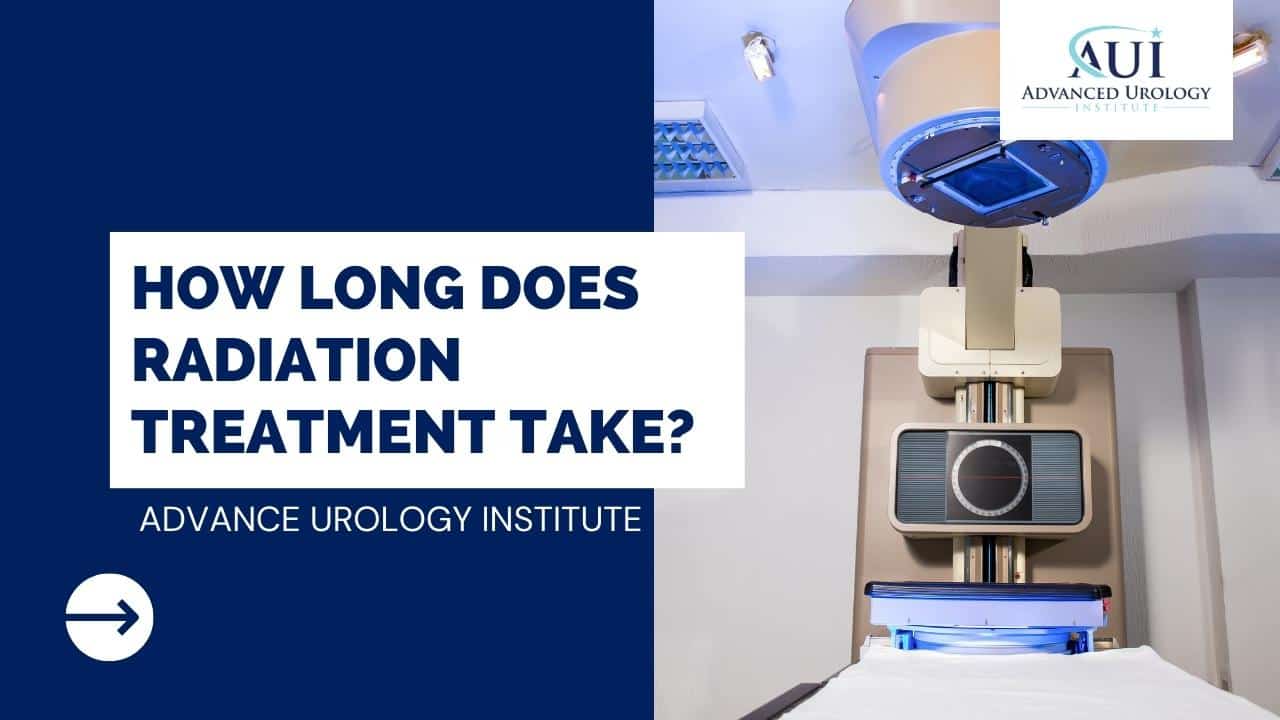 Radiation therapy delivers controlled, safe and effective doses of radiation to cancerous tumors. The tumor cells are exposed to high doses of radiation that destroy their genetic material and eventually damage or kill them. Hence the cancer can no longer grow, multiply or spread after the treatment. Though the radiation affects all the cells, healthy ones are able to recover fully from the effects of the treatment.
Radiation therapy delivers controlled, safe and effective doses of radiation to cancerous tumors. The tumor cells are exposed to high doses of radiation that destroy their genetic material and eventually damage or kill them. Hence the cancer can no longer grow, multiply or spread after the treatment. Though the radiation affects all the cells, healthy ones are able to recover fully from the effects of the treatment.
Radiotherapy is generally administered either externally or internally. During external radiation therapy—the most common form of the treatment—a machine is used to direct high-energy rays at the cancer. In contrast, internal radiotherapy (also called brachytherapy) uses a radioactive source that is temporarily or permanently implanted directly into the cancerous area.
So how long does the radiation therapy take?
The exact duration of the treatment depends on the type, characteristics, and location of the tumor. The length of treatment also depends on the dosage to be delivered, the number of fractions to be given, the treatment plan created by the radiation oncologist, and whether it is external or internal radiotherapy.
For example, if you have a deeper tumor, then you may require a more-focused beam delivered for a shorter period of time. But if you have a larger, shallow tumor, then you may need treatment for a longer period.
Equally, since the radiation must be given in a way that has minimal adverse effects on healthy cells, a shorter length of exposure is necessary if the tumor is located in more delicate organ (like the brain) or is in close proximity to very sensitive body tissues.
Your radiation oncologist will assess your tumor and make the necessary prescription. Then, by working with your radiation oncology team, the oncologist will determine how best to deliver the prescribed dosage, how many treatments are necessary, and how long it should take.
Next, your radiation oncologist will oversee the simulation of treatment to ensure that appropriate dose is given to the right location and that as little as possible reaches normal tissue. The simulation is followed by the testing of the delivery set-up to check the performance and positioning of the equipment to be used to give the treatment. After that, your treatment visits begin with the radiation therapist in charge of administering the daily fractions.
How long does external radiation therapy take?
External radiotherapy is typically delivered daily, from Monday through Friday, for five to eight weeks. Weekend breaks are factored into the treatment schedule to allow healthy cells to recover. Each treatment is offered on an outpatient basis.
But there are exceptions to this schedule. Some tumors may require treatment for less than five days per week and only need treatment for one to two weeks. Specifically, shorter durations of two or three weeks in length are commonly used in palliative care—the use of radiation to relieve cancer symptoms. Still other tumors, such as certain brain cancers, may require just a single treatment.
External radiation therapy is a painless process and is almost like having a regular x-ray. You’ll be in a room for 30-45 minutes because of the time it takes to set up equipment and place you in the correct position, but the actual treatment takes 2-5 minutes.
Once in the room, you’ll lie on the treatment table. You’ll then be positioned under the radiation machine. Your radiation therapist will place special shields or blocks between the machine and other parts of your body to protect normal tissues. Thereafter, you’re expected to remain still, though you don’t have to hold your breath.
After you’re in the correct position, your radiation therapist will move into a separate, nearby room to turn on the machine and begin the actual treatment. The therapist will watch you on a monitor and you’ll be able to communicate with the therapist through an intercom.
How long does internal radiation therapy take?
Brachytherapy uses radiation implanted inside the body to treat cancer. The radiation implant is placed as close as possible to the tumor in order to concentrate the radiation on the cancer cells and minimize radiation damage on normal tissue around the tumor. The radioactive material is sealed in a thin wire or hollow tube (catheter) and implanted directly into the cancer affected area on a temporary or permanent basis.
Internal radiation therapy is used when the oncologist decides that the best way to treat the tumor is to expose it to a higher radiation dose. The radioactive implant is closer to the cancerous cells and delivers a higher dose over a shorter period of time. The treatment is ideal for several types of cancers, including breast cancer, brain tumor, gynecological cancer (like ovarian and cervical cancer), lung cancer, and head and neck cancer.
The time taken for brachytherapy and whether it is done on an inpatient or outpatient basis depends on the type of therapy used and the nature of the cancer. In some cases, internal radiotherapy can be completed within three to five outpatient treatments of a few minutes each. But in other cases, the radioactive implant may be left in place for up to a week and there is need for a hospital stay during that period.
Finishing your radiation therapy sessions
It is important to finish all sessions of radiotherapy. And never to miss or delay treatments because this may reduce the effectiveness of the radiation in killing the tumor cells.
You should remember that your doctors are not just bothering you with making several hospital visits. There is need for different sessions because radiation is destructive and should not be delivered all at ago. In fact, if the recommended dosage was to be given once, it would pose a greater risk to healthy tissues and produce more adverse effects.
At Advanced Urology Institute, we spend the necessary time, effort and expertise to design a detailed treatment plan for radiation therapy. We offer the treatment in conjunction with other therapies and with the help of experienced oncologists and a multidisciplinary cancer care team.
We are also committed to reducing the time our patients take in treatment and often implement maximized aggressive treatments when necessary. Contact us today to learn whether radiotherapy is right for you and the various options available for you. For more information, visit the site “Advanced Urology Institute.”
References
- “What is Radiation Therapy?” Cancer.Net, American Society of Clinical Oncology, www.cancer.net/navigating-cancer-care/how-cancer-treated/radiation-therapy/what-radiation-therapy
- “External Beam Radiation Therapy.” American Cancer Society, www.cancer.org/treatment/treatments-and-side-effects/treatment-types/radiation/external-beam-radiation-therapy.html
- “Radiation Therapy.” CancerQuest, Winship Cancer Institute of Emory University, www.cancerquest.org/patients/treatments/radiation-therapy
What can cause an elevated PSA?
Key takeaways
- The PSA test measures the quantity of a protein produced by cells of the prostate gland in a blood sample. It is typically used to screen for and monitor prostate cancer in men.
- Elevated PSA levels can also be caused by non-cancerous conditions such as age, prostatitis, benign prostatic hyperplasia (BPH), and urinary tract infections.
- To use an elevated PSA as the basis for ordering a prostate biopsy, it is now recommended that the level of PSA is monitored over time and any changes are monitored regularly, with a suspicious lump detected during a DRE being a more accurate basis for suspecting prostate cancer.
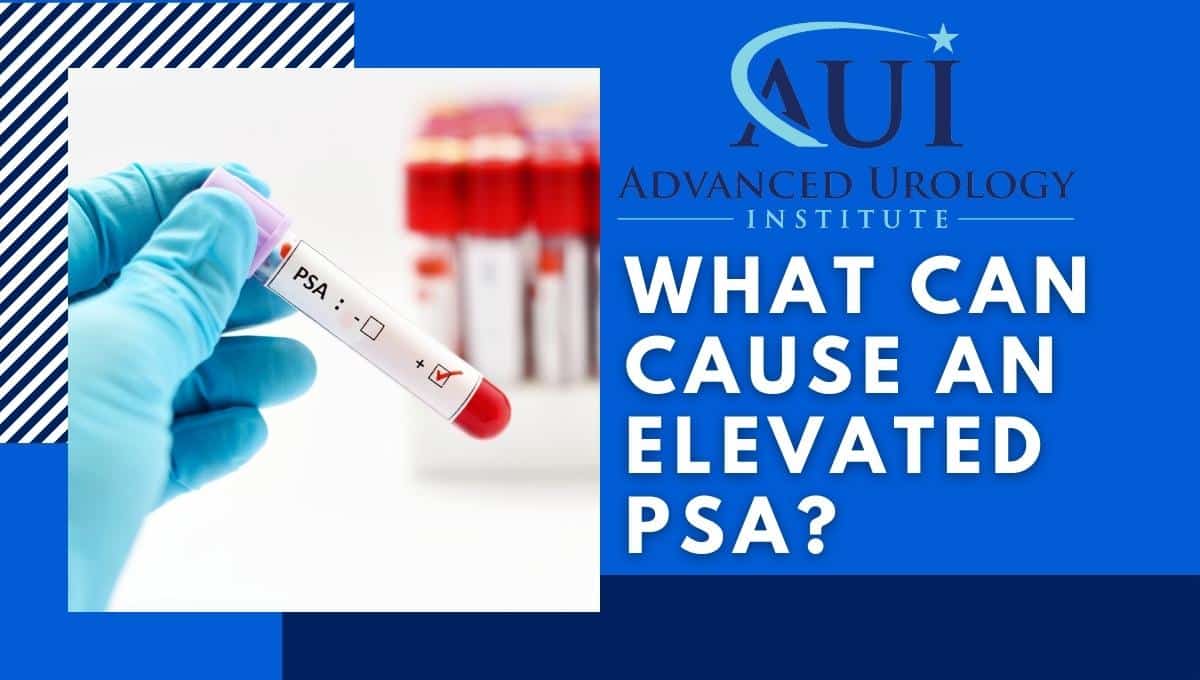 Prostate-specific antigen (PSA) is a protein produced by cells of the prostate gland. It is synthesized by both normal and malignant cells and released in blood. The PSA test measures the quantity of this protein in a blood sample, which is then reported in nanograms of PSA per milliliter (ng/mL) of blood. A PSA level of 4.0 ng/mL and below is often considered normal.
Prostate-specific antigen (PSA) is a protein produced by cells of the prostate gland. It is synthesized by both normal and malignant cells and released in blood. The PSA test measures the quantity of this protein in a blood sample, which is then reported in nanograms of PSA per milliliter (ng/mL) of blood. A PSA level of 4.0 ng/mL and below is often considered normal.
What causes an elevated PSA level?
The blood PSA level is typically elevated in men with prostate cancer. Therefore, the test is usually ordered in conjunction with the digital rectal exam (DRE) to screen men that are asymptomatic for prostate cancer. It is also recommended for monitoring the progression of prostate cancer in men already diagnosed with the disease, and to test men with prostate symptoms to find out the nature of their problem.
Apart from prostate cancer, there are a number of conditions that may increase the PSA level. For instance, PSA is elevated with age, usually due to enlargement of prostate tissue over the years. Prostatitis (inflammation of the prostate), which is a condition common in men under 50 years due to bacterial infection, tends to result in increased PSA level. Other conditions that lead to increased PSA level include benign prostatic hyperplasia (BPH), urinary tract infections, prostate injury, recent ejaculation, high parathyroid hormone, and surgical procedures.
Normal versus abnormal PSA level
Although a PSA level of 4.0 ng/mL or below is often considered normal, the level of the protein can vary over time in the blood of the same man, making what is usually taken as the normal range less accurate. In fact, studies have indicated that some men with PSA level below 4.0 ng/mL have prostate cancer while many men with levels above 4.0 ng/mL have been found free of the cancer.
Besides, due to the various factors that may cause a fluctuation of PSA level, such as age, prostatitis, BPH, and urinary tract infections, having a fixed normal range for all men is unreliable in some cases. Equally, since PSA test results vary from one laboratory to another and because drugs like Dutasteride (Avodart) and Finasteride (Proscar) that are used to treat BPH tend to lower PSA level, a single elevated PSA may not be very helpful.
Therefore, to use an elevated PSA as the basis for ordering a prostate biopsy to ascertain whether prostate cancer is present, it is now recommended that the level of PSA is monitored over time. A continuous trend of increasing PSA in blood over a prolonged period of time, together with a suspicious lump detected via the DRE, is a more accurate basis for suspecting prostate cancer and ordering for a prostate biopsy.
Elevated PSA in prostate cancer screening
For men without symptoms of prostate cancer, an elevated PSA level may be followed by a repeat PSA test to confirm the original finding. And if the PSA level is still high, the urologist may recommend that more PSA tests and digital rectal exams be done at regular intervals so that any changes can be monitored over time. If the PSA level continues to rise or if a suspicious lump is found during a digital rectal exam, the doctor may now order for confirmatory tests.
For example, a urine test may be requested to establish if the rising PSA level is due to a urinary tract infection. Likewise, imaging tests like cystoscopy, x-rays or transrectal ultrasound may help to show the size and nature of any lump.
And if the tests show there could be prostate cancer, the urologist will recommend a prostate biopsy. Multiple samples of prostate tissue are collected by inserting hollow needles into the prostate through the wall of the rectum. The samples are examined by a pathologist to confirm whether the cells are cancerous or not.
Elevated PSA in monitoring prostate cancer treatment
After treatment for prostate cancer, the urologist will want to continue to monitor the PSA level to establish whether the disease is recurring or not. An elevated PSA level after treatment is usually the first sign that the cancer is recurring. In fact, an elevated PSA after treatment often happens many months or years before the signs and symptoms of prostate cancer recurrence show.
A single elevated PSA test isn’t enough to conclude that the cancer has recurred. So the urologist will recommend that the test be repeated a number of times, and be done together with other tests, to check for evidence of prostate cancer recurrence. Repeated PSA tests help the doctor to establish a trend over time instead of relying on a single elevated PSA level.
At Advanced Urology Institute, we are committed to the highest standards of urologic care. We make sure to use the right diagnostic and treatment tests, techniques and procedures to deliver the best possible outcomes for our patients. That is why when it comes to the PSA test, we do not rely on a single elevated result to draw conclusions about your prostate health.
It is our practice to monitor elevated PSA for a prolonged period of time and to use the test alongside risks factors (age and family history) and other tests like the digital rectal exam, before we can make conclusions regarding your prostate health. We believe that an elevated PSA level is a valuable tool for early detection of prostate cancer and for successful treatment of the condition if the test is used properly. For more information on prostate cancer diagnosis and treatment, visit the site “Advanced Urology Institute.”
References
- “Prostate-Specific Antigen (PSA) Test Fact Sheet.” National Cancer Institute, U.S. National Institutes of Health, cancer.gov/types/prostate/psa-fact-sheet
- “Prostate Enlargement (Benign Prostatic Hyperplasia).” National Institute of Diabetes and Digestive and Kidney Diseases, U.S. Department of Health and Human Services, www.niddk.nih.gov/health-information/urologic-diseases/prostate-problems/prostate-enlargement-benign-prostatic-hyperplasia
- “Benign Prostatic Hyperplasia.” Medscape, www.emedicine.medscape.com/article/457394-overview
What to Expect When Having Radiation Therapy
Key takeaways
- Radiotherapy is a treatment for cancer that uses high doses of radiation to kill cancer cells. It may be used before, during, or after surgery, and can also be used in conjunction with chemotherapy.
- A radiation oncology team typically includes a radiation oncologist, radiation oncology nurse, medical radiation physicist, dosimetrist, and radiation therapy technologist, who work together to design and administer the treatment plan.
- Before radiotherapy treatment begins, a patient will typically be referred to a radiation oncologist, have their medical records reviewed, undergo a physical exam, and have imaging scans to locate the tumor. The patient will then be asked to sign a consent form and a treatment plan will be developed before the first session.
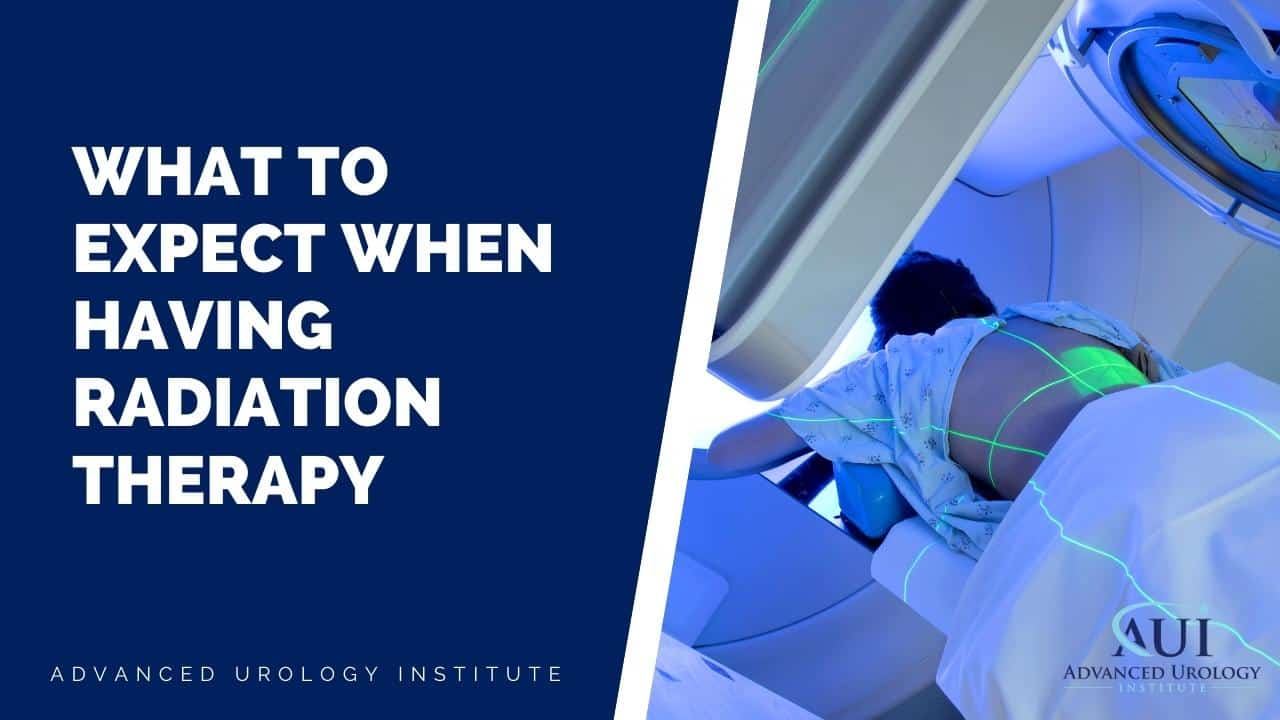 Scheduling your initial radiotherapy session can create concern and anxiety. And of course many are worried and feel overwhelmed.
Scheduling your initial radiotherapy session can create concern and anxiety. And of course many are worried and feel overwhelmed.
At Advanced Urology Institute, we encourage our patients to be partners in the process and to educate themselves about the procedures. We believe that the more you know about radiotherapy before your treatment, the more confident you’ll be to face the treatment and the more likely you’ll play an active role in your recovery.
So what is radiation therapy?
Radiation therapy is the treatment of cancer using focused high doses of radiation to kill cancer cells. During treatment, specific amounts of the radiation are aimed at tumors or parts of the body affected by the cancer. Once administered, the radiation kills, stops, or slows down the growth of cancer cells.
Radiotherapy may be used before surgery to shrink a tumor to a smaller size. But it may also be used during surgery to target certain cancer cells. In some cases, radiation therapy is used after surgery to destroy the remaining cancer cells.
When paired with chemotherapy, it can help to improve treatment outcomes. And in cancer cases where a cure is not possible, radiation therapy can be used for palliative purposes—to reduce pain, pressure or other side effects of treatment.
While the radiation affects all cells, healthy ones are able to repair themselves and recover their normal cell function after treatment. Alternatively, unhealthy cells, such as cancer cells, aren’t able to repair after radiation. Hence, the treatment helps to destroy and eliminate unhealthy cells with minimal adverse effects on healthy cells.
What is a radiation oncology team?
Typically, radiotherapy is designed and administered by a team of highly trained medical professionals. The team usually includes a radiation oncologist, radiation oncology nurse, medical radiation physicist, dosimetrist, and radiation therapy technologist.
The radiation oncologist is the doctor who specializes in delivering radiotherapy for treating cancer and who oversees the overall treatment protocols. The doctor works closely with other team members to develop the treatment plan.
The radiation oncology nurse is skilled and experienced in caring for patients receiving radiation therapy. The nurse answers patient questions about the treatment, monitors the patient’s health during the treatment, and helps to manage the side effects.
The medical radiation physicist designs the treatment plan and is an expert in using radiation equipment. To ensure the right doses are administered with accuracy and precision, the radiation physicist is a key member of the team.
And finally, the radiation therapy technologist (radiation therapist) will directly operate the treatment machines such as a linear accelerator during therapy sessions and give the scheduled treatments. Other professionals might include social workers, nutritionists (dietitians), dentists, and rehabilitation therapists, such as physical therapists or speech therapists.
What happens before your treatment?
You’re usually referred to a radiation oncologist when your doctor believes radiotherapy might be an option worth considering. The radiation oncologist will then review your medical records, conduct a physical exam, and order various tests. The doctor then explains your options, speaks with you about the potential benefits and risks of the treatment and answers questions.
If you decide to proceed with radiotherapy, you’ll be asked to grant permission by signing the consent form. Your treatment team will then design the treatment plan before your first session.
Your treatment team will use imaging scans, such as computed tomography (CT), X-ray, and magnetic resonance imaging (MRI) to identify the tumor location. You’ll then receive small marks on your skin to assist the team in targeting the radiation beam at the tumor.
In addition, you may be fitted with immobilization devices such as tapes, foam sponges, headrests, simply molds or plaster casts. These items will help you stay secure and in the same position throughout treatment. If the radiation is targeting your head or neck, you may receive a thermoplastic mask, which is a mesh mask molded to your face and secured to the table.
Though it is crucial for your body to remain in the same position for each treatment, your oncology treatment team cares about your comfort and would like to hear your suggestions. So speak up about how you’re feeling. Communicate with the team so you can find a comfortable position every time.
What happens during treatment?
Radiotherapy is generally scheduled for five days a week over a six to seven week period although the treatment can last for as little as two to three weeks if the goal is merely palliative. Over the course of treatment, you’ll receive small doses (fractions) of daily radiation instead of large doses. This helps to best target cancer cells and protect healthy cells in the treatment area. Compliance and consistency is key. It is advisable that you complete all your sessions as scheduled and not miss or delay any treatments.
Before treatment is administered, your radiation therapy technologist will ask you to change into a gown and lie on the movable bed. The marks on your skin are used to position the machine and table—though you may be positioned using molds, boards or special holders. If necessary, special blocks or shields are used to protect your normal organs. You’ll then have to remain still in that position during your treatments breathing normally.
For each treatment session, you’ll be in the room for 10-30 minutes with the radiation administered for 1-2 minutes of that time. As soon as the treatment begins, the radiation therapy technologist will leave you alone in the room with a closed circuit TV and an intercom. The technologist will see and hear you at all times. So if you think you need to move, just notify the therapist and the machine will be turned off and adjusted.
The technologist controls the machine from outside as treatment progresses and monitors the machine at all times. The treatment is painless and you’ll not see, smell or hear the radiation. In between your treatment sessions, you’ll need to undergo various tests and checks to confirm that the treatment is going on as earlier planned.
For instance, port films will be taken to ensure the positioning remains as it should be. Weekly blood tests may also be run to check your blood cell counts. Plus, your radiation oncologist will meet with you once a week to assess how your body is responding to treatment. Be sure to tell the doctor of any changes or concerns.
Top-notch radiotherapy services
At Advanced Urology Institute we provide cutting-edge treatments for cancer. Our radiotherapy service is tailored to deliver specifically targeted radiation to precisely target and kill cancer cells.
For more information on radiotherapy and other forms of cancer treatment, visit the site “Advanced Urology Institute”.
References:
- “Radiotherapy.” National Cancer Institute, U.S. National Institutes of Health, www.cancer.gov/about-cancer/treatment/types/radiation-therapy.
- “Professions in Radiation Therapy.” RadiologyInfo.org, The Radiological Society of North America, www.radiologyinfo.org/en/info/professions-radiation-therapy.
- “What to Expect When Having Radiation Therapy.” Cancer.Net, American Society of Clinical Oncology, www.cancer.net/navigating-cancer-care/how-cancer-treated/radiation-therapy/what-expect-when-having-radiation-therapy.
Prostate Cancer Recurrence: What Should You Know According to Dr. Jonathan Jay?
KEY TAKEAWAYS:
- Prostate cancer recurrence can occur due to cancer cells left behind during treatment or because the cancer was initially diagnosed as less advanced than it actually was.
- A rise in Prostate Specific Antigen (PSA) levels and the use of PET/CT imaging scans are effective ways to diagnose recurrent prostate cancer.
- Treatment options for recurring prostate cancer depend on the initial treatment and may include radiation therapy, surgical removal of the prostate, cryotherapy, or hormone therapy.
Cancer of the prostate affects a small gland that is situated just in front of the rectum and around the base of the urethra in men. It is the most common type of cancer in men, with those over age 50 facing the greatest risk. The good news is that prostate cancer is treatable. Treatment options include surgical removal of the prostate gland, radiation therapy, hormone therapy and chemotherapy. A combination of various treatment methods may be applied for full effect. Sometimes, however, even after treatment has been administered successfully, the prostate cancer returns. This is called a recurrence and it occurs with other types of cancer too.
Causes of Prostate Cancer Recurrence
Prostate cancer can recur for two main reasons.
1. A small clump of cancer cells left behind during the earlier course of treatment can grow into a larger number.
2. The cancer initially was diagnosed as being less advanced than it actually was. For instance, a patient might be diagnosed with cancer that is limited only to the prostate while in fact, the cancer might have advanced to the surrounding lymph nodes.
Diagnosis of Recurrent Prostate Cancer
 A major indicator of recurring prostate cancer is a rise in Prostate Specific Antigen (PSA) levels. PSA is a protein produced by the prostate. A PSA test is always conducted as part of the preliminary work in the diagnosis of prostate cancer, whether initial or recurrent. Ideally, after successful treatment, PSA levels should go down and should stay consistently low. If the level starts to rise again, that is a red light that should be followed up with further testing.
A major indicator of recurring prostate cancer is a rise in Prostate Specific Antigen (PSA) levels. PSA is a protein produced by the prostate. A PSA test is always conducted as part of the preliminary work in the diagnosis of prostate cancer, whether initial or recurrent. Ideally, after successful treatment, PSA levels should go down and should stay consistently low. If the level starts to rise again, that is a red light that should be followed up with further testing.
Another test, which doctors agree is very effective in checking for recurrent prostate cancer, is the PET/CT imaging scan. Dr. Jonathan Jay, who has an office in Naples, FL, says the scan is effective because it has the ability to localize the cancer and map out its extent with great accuracy. Treatment of cancer usually depends on being able to tell exactly what part is affected. If this can be done, then it becomes easy to direct treatment at that specific area, which is what a PET/CT imaging scan does.
Treatment of Recurring Prostate Cancer
The form of treatment depends on what was initially administered. The following options are available:
1. If the prostate was surgically removed the first time, radiation therapy may be administered to treat the recurrent cancer;
2. If radiation therapy was administered the first time, a surgical removal of the prostate may be recommended. That decision depends on whether or not the cancer has spread outside of the prostate.
3. Cryotherapy. This treatment involves freezing the cancer cells to kill them.
4. Hormone Therapy. This may be used in combination with other methods. It is also used as a last option when the cancer has spread very far.
The management of recurrent prostate cancer depends on finding the cancer, which most likely would be detected in a post treatment screening. Men who have undergone successful prostate cancer treatment should attend regular screenings after the treatment is finished. Followup screening and checkups are important, and it is important to seek out a comfortable, patient centered treatment center, such as the Advanced Urology Institute. The staff at Advanced Urology Institute is very experienced in working with patients and helping with questions, diagnosis and treatment. They have the knowledge and technology to work with the patient through every step of the process. For more information, visit the Advanced Urology Institute website/
TRANSCRIPTION:
Prostate cancer is one of the most common types of cancer in men, affecting about one in nine. While prostate cancer can be cured in some men, approximately one in three men will experience what is known as recurrent prostate cancer, which is prostate cancer that has come back after initial treatment. Now unfortunately, prostate cancer is the second leading cause of cancer death in men; about one in 41 will die from prostate cancer this year, and that’s according to the American Cancer Society.
The good news is that there are newer imaging techniques that can help locate recurrent prostate cancer. Being able to locate the disease in the body can really help doctors personalize care for patients living with recurrent prostate cancer. Here to help us understand more about this is Dr. Jonathan Jay and his patient Peter Irving. Welcome to both of you.
Thank you. Doctor, let me start with you. This is Men’s Health Month, so let’s start with prostate cancer and what it is.
Well, we’ll take a step back and start with what the prostate is because most people don’t understand what the prostate is. The prostate is a male reproductive organ, and one-third of the fluid that a man sees in his ejaculation comes from the prostate. The purpose of this fluid is to nourish and protect sperm until conception.
It’s treatable?
Yes, prostate cancer is treatable. Prostate cancer in its treatable stages is asymptomatic, so it’s very important for men to understand that they need to have an evaluation on a yearly basis starting at age 50, which would entail a rectal examination and a blood test called PSA.
Alright, so let’s bring in Peter. When were you diagnosed? What happened?
In 2008, I was diagnosed with cancer following a needle biopsy in which 12 out of 13 were positive. So you were doing a routine exam, Peter?
Just routine, and the PSA started to spike over a period of months. From what to what?
My normal was 1.5, let’s say, and this kept creeping up, and I think my general practitioner sent me to a urologist when it got to like four or five. But at that time, they still did not believe I had prostate cancer; things just weren’t what they thought they should be. That’s why I went to the urologist, and then I had the needle biopsy.
Which confirmed it?
Which confirmed it, and then I went and had surgery, had it removed, and followed with the same urologist. To be checked?
Yeah.
Alright, doctor, let me bring you in. If you could define PSA for us, please, and inform us of the levels that happened.
PSA stands for prostate-specific antigen; it’s a protein that’s excreted solely by the prostate, so it’s a great way of monitoring whether a patient has prostate cancer, develops prostate cancer, or has a reoccurrence of prostate cancer. The significance of PSA is what the PSA is in an individual. In Peter’s case, his PSA was one and increasing over time; that was indicative that something was changing and something was wrong.
Understood. So, Peter, you have the surgery, you’re living your life, and then you have recurrent prostate cancer?
Well, my PSA started to spike again, you know, in theory, you shouldn’t have any PSA.
Exactly. And I believe it was somewhere again in the ones, and then it kept rebounding and going up and up, and we watched it for four years. In 2016, they decided to do radiation therapy and hormone therapy together, and they concentrated on the spot they found through the new imaging, and today I’m zero.
That’s fantastic. Doctor, since he mentioned the new imaging, it’s a PET CT imaging test. Tell me, what is different about this test as opposed to what is always used, I guess, in a bone scan and CT, right?
Yes. So, what are the differences between what was used then and what he used?
We had to define the location and extent of this disease, so conventionally, how do we do that? CT scan is a test that has the ability to survey the body without making an incision; we can survey the body for soft tissue changes, we can detect enlarged lymph nodes, we can detect masses within the abdominal cavity. Bone scan surveys the bone for reoccurring disease. Now, think of this: with these conventional tests, you have to have a mass—a mass would be hundreds of thousands or millions of cells in one place—to be detected by these conventional studies. This newer CT PET scan has the ability to define the location and extent of prostate cancer, reoccurring prostate cancer, at an earlier stage and at a lower PSA.
And how does that make a difference then for the treatment?
It’s very important because we want to treat the disease; we need to define the extent and location of the disease, as that dictates our treatment options. So, as opposed to, let’s say, affecting other organs in the body, you’re minimizing the effects?
Absolutely. In Peter’s case, we were able to do a CT PET scan, localize reoccurrence to one area within the pelvis, and we were able to treat that, but we treated that with radiation or hormonal therapy. We were able to treat that without affecting any of the other organs around it.
Peter, you’re doing fine now, right? Everything is controlled?
A negative PSA test for two-plus years.
So, for our viewers out there, and we have lots of males, what would you say, what would be your final thoughts, your words of wisdom?
Just have a routine, probably at the age of 45.
45, 50, yes. Start getting your PSAs on a yearly basis, and it’ll make you feel much better. Absolutely. So not worrying about that.
Doctor, any final takeaways?
One of the important things is that prostate cancer is prevalent in our community, yes, but if found early, it’s a treatable medical condition, and all you have to do is a simple rectal examination and a blood test called PSA with your primary care physician. If something were to happen again in the future, would you suggest again this new imaging test to him?
Absolutely. If we saw increasing PSAs, the first thing that I would do is this new CT PET scan.
Alright, thank you so much, gentlemen, both of you for your time. Thank you, and I’m glad you’re doing fantastic.
REFERENCES:
- “When cancer returns: How to cope with cancer recurrence.” https://www.mayoclinic.org/diseases-conditions/cancer/in-depth/cancer/art-20044575.
- “Treating Prostate Cancer That Doesn’t Go Away or Comes Back ….” https://www.cancer.org/cancer/prostate-cancer/treating/recurrence.html.
- “Prostate cancer – Symptoms and causes – Mayo Clinic.” 14 Dec. 2022, https://www.mayoclinic.org/diseases-conditions/prostate-cancer/symptoms-causes/syc-20353087.
Thanksgiving is The Best Time To Get A Vasectomy
Considered the easiest and safest form of surgical sterilization, vasectomy is an outpatient procedure in which the tubes (vas deferens) that carry sperm from a man’s testicles to the urinary tract are cut to stop the release of sperm during sexual intercourse. During a vasectomy, a small cut made through the skin on the front surface of the scrotum is used to bring the vas deferens to the skin level, allowing the vas to be cut or cauterized (burned) before being tied or clipped off and then dropped back into the scrotum.
After a vasectomy, a man is encouraged to rest for a few days. During the first 24 hours after the procedure, it is recommended that he apply an ice pack on the scrotum or use a package of frozen peas to reduce discomfort. The ice pack should be wrapped in a towel and should not be placed directly on the skin. Recovery takes a few days and the man can resume routine work within 3 days, but should avoid exercise and heavy lifting for at least one week.
Choosing to undergo a vasectomy is a big step in your life, and like most big life decisions, the timing of the procedure is critical. In fact, while the procedure is typically an outpatient routine, the recovery period requires ample rest, which makes it important to carefully choose the time to have the procedure. Even for a really tough guy who would like to go back to work soon after a vasectomy like it is no big deal, recovery still means a few days of soreness and discomfort which need to be properly timed to minimize inconvenience as much as possible.
So when is the best time to have a vasectomy?
1) March Madness
For sports fans, March offers lots of good entertaining TV watching, particularly during the first weekend of the NCAA Basketball Tournament. It is also a perfect time to schedule the procedure because it allows you to rest on your couch and enjoy the games on TV while your body recovers from the operation. In fact, many urologists across the United States have reported that there is a massive increase in the number of vasectomies scheduled in the period leading to the NCAA tournament (as many as 50 percent more procedures during this season than at any other time of the year). So if you are thinking about having a vasectomy, the Thursday and Friday of the first weekend of the NCAA tournament is a good time to undergo the procedure and then kick back for the entire weekend with your ice pack and great games involving your favorite players and teams.
2) A Four-day Weekend
Due to the down time involved in recovering from a vasectomy, a four-day weekend is ideal for the procedure. In this case, you can take a Friday off from work if there is a holiday the following Monday, such as Labor Day or Memorial Day. The time is adequate for you to relax and enjoy quiet activities as you recover from the operation. Scheduling the procedure on a Thursday or Friday also will reduce the amount of time you will miss from work.
3) Thanksgiving Weekend
After a vasectomy, it is recommended that you get enough rest and avoid activities that may require exertion. There is no better time of the year that you can find complete rest from exertion than during the Thanksgiving weekend. Thanksgiving weekend provides four days for you to enjoy delicious food, watch football, spend time with family members and engage in other activities that you desire. So you can schedule your operation just before the big day’s feast in order to have enough time to recover. Of course, you should avoid traveling over that weekend and stay away from the traditional annual touch football family game.
Have you decided to undergo a vasectomy or have questions about planning for a vasectomy? Advanced Urology Institute is the place for you to find the best information and get the safest and most effective vasectomy. As a leader in vasectomy in Florida, Advanced Urology Institute offers top-notch vasectomy techniques such as the no-needle no-scalpel procedure that is less invasive and causes minimal discomfort, fewer complications and requires a shorter recovery time. For more information on how to find the best urologist for treatment of urological problems and for the vasectomy procedure, visit the “Advanced Urology Institute” site.



